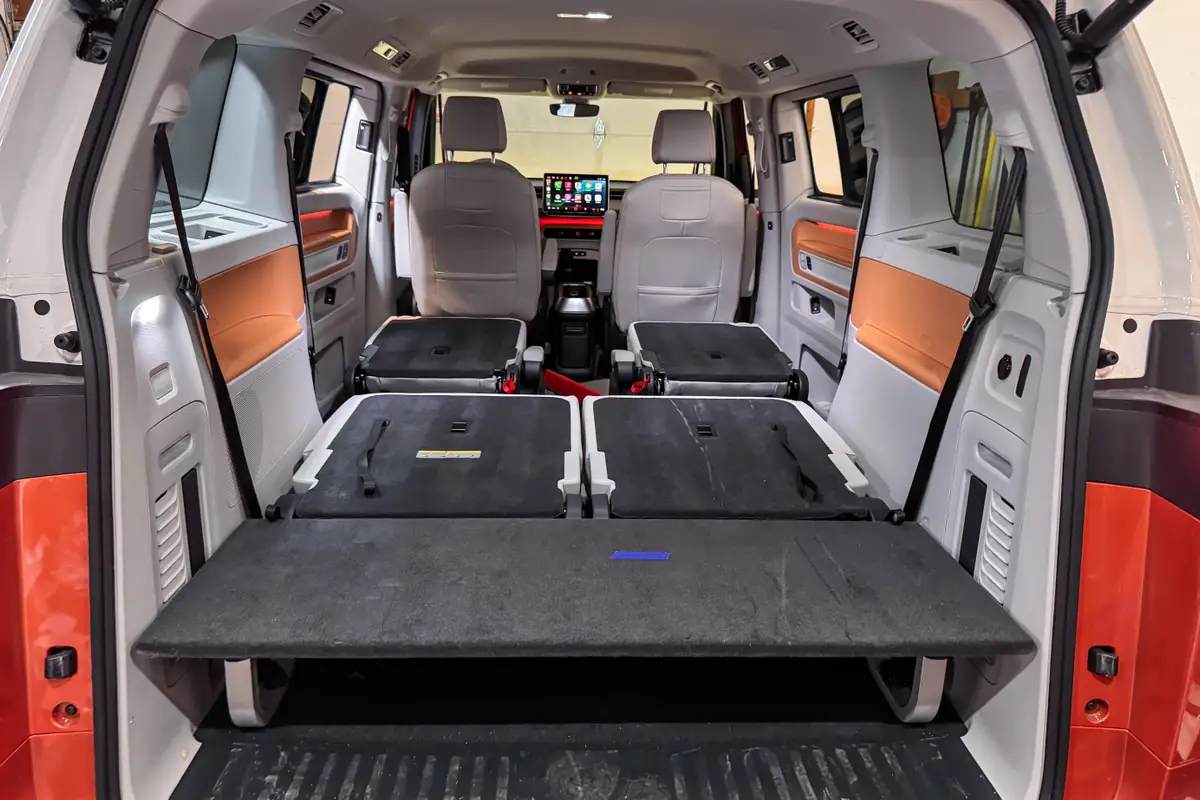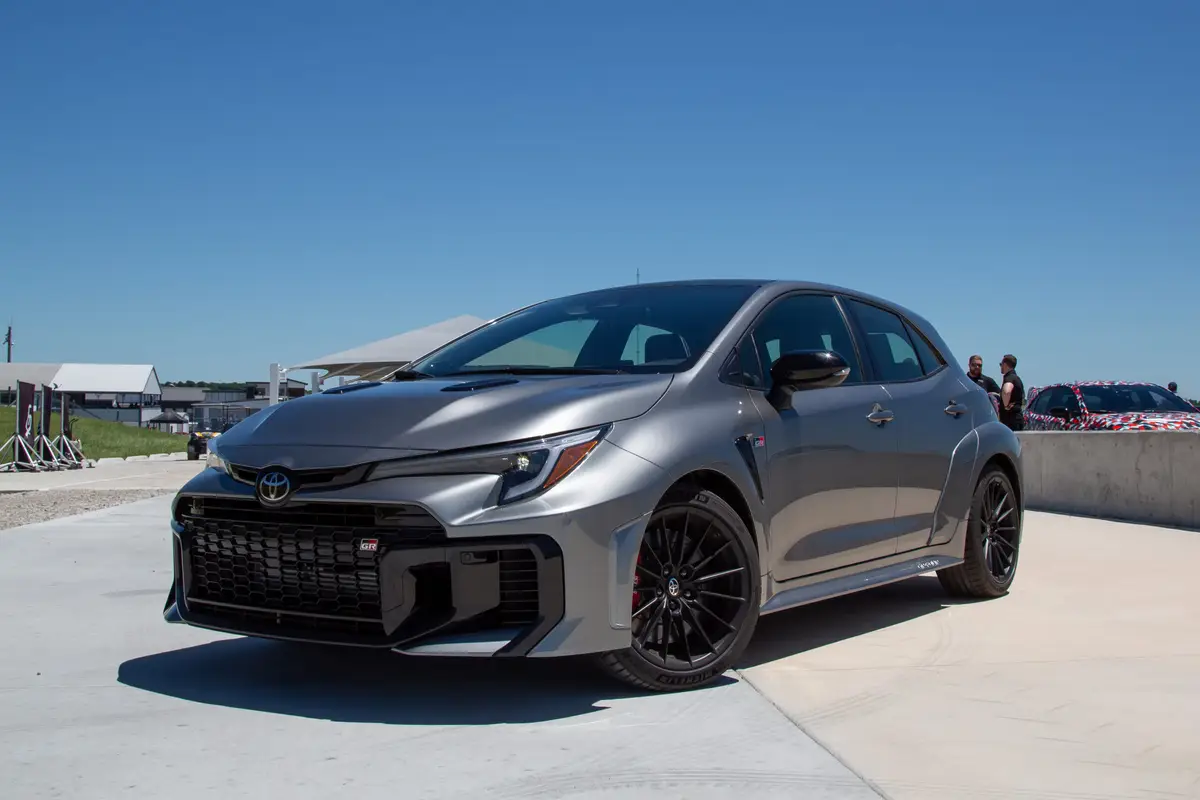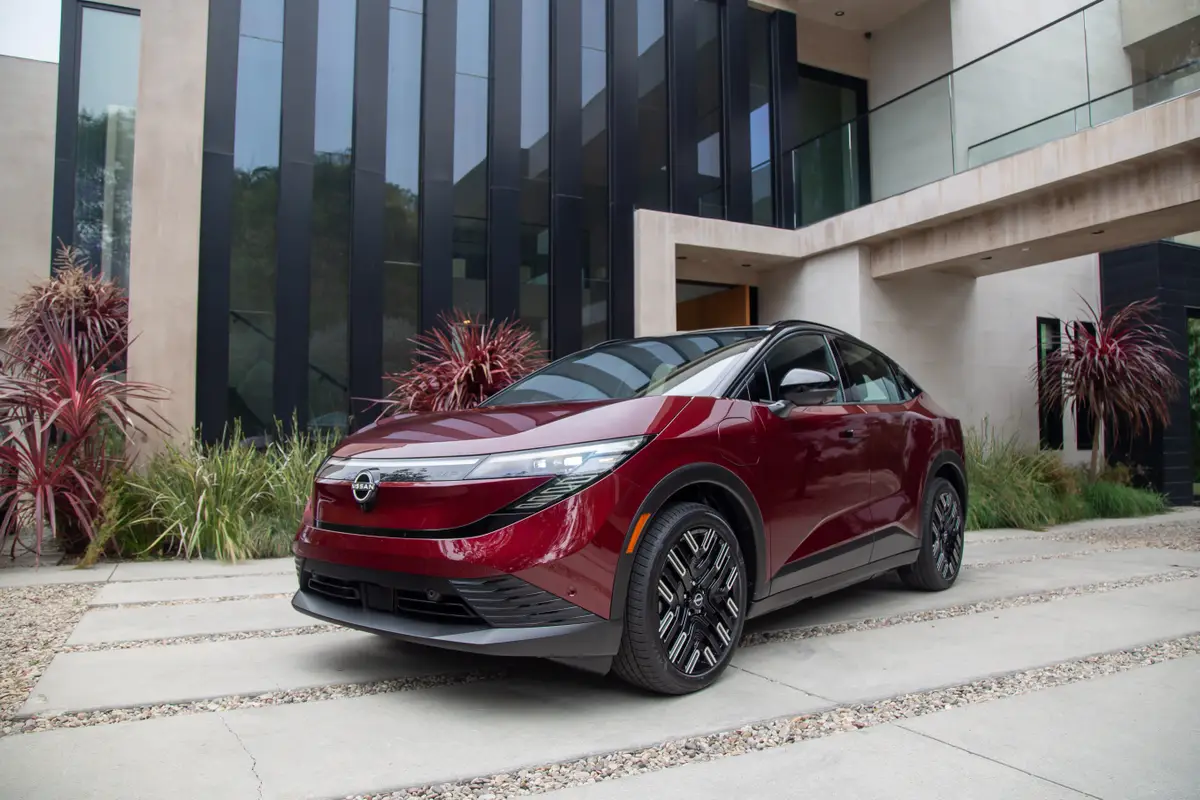2015 Subaru Outback: Car Seat Check

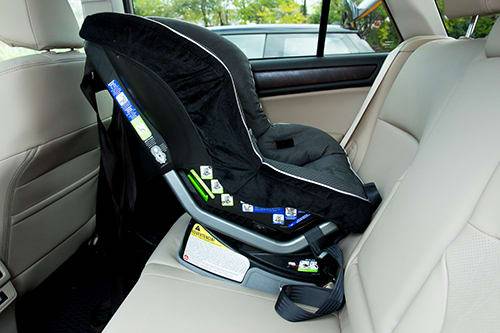
In its 2015 redesign, beloved family hauler the Subaru Outback continues to smartly straddle the line between a practical wagon and a rugged SUV, while getting subtle updates to its exterior styling, interior upgrades and improved fuel economy. Families will appreciate the new Outback’s roomier cabin, cushier feel and an improved center storage bin that can hold larger items like an iPad. We last car-seat checked the Outback in 2012; that model proved as delightfully utilitarian as the vehicle’s reputation. Can the 2015 live up to that easy-to-use, easier-to-love rep?
How many car seats fit in the second row? Two
What We Like
- The five-seat wagon has two sets of Latch anchors located under flaps that are Velcroed in place. Also, while the seats do not recline, the head restraints are removable.
- Our rear-facing infant seat installed easily with no need to move the front passenger seat forward.
- The forward-facing convertible seat also installed with ease, and the tether anchors were simple to use.
- Thanks in part to stable bases on the seat belt buckles, installing our booster seat also went well.
What We Don’t
- Latch anchors sit rather deep in the seat bight, and the seat belt buckle blocked access a bit when installing the rear-facing convertible seat.
- An odd setup that has the seat-belt buckles sort of stacked on top of one another could make it difficult for children to get the buckle in the right spot.
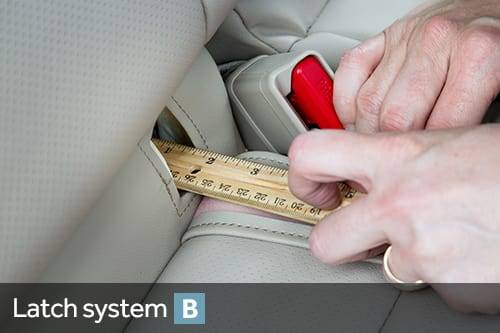
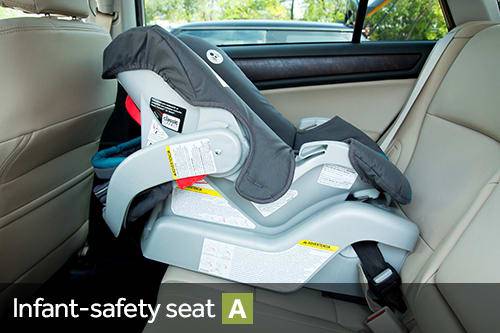

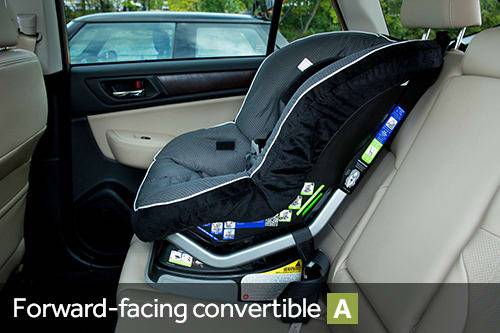
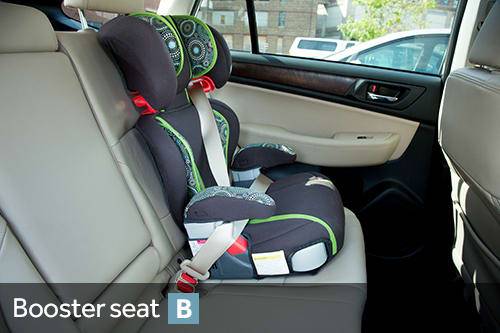
Grading Scale
A: Plenty of room for the car seat and the child; doesn’t impact driver or front-passenger legroom. Easy to find and connect to Latch and tether anchors. No fit issues involving head restraint or seat contouring. Easy access to the third row.
B: Plenty of room. One fit or connection issue. Some problems accessing third row when available.
C: Marginal room. Two fit or connection issues. Difficult to access third row when available.
D: Insufficient room. Two or more fit or connection issues.
F: Does not fit or is unsafe.
About Cars.com’s Car Seat Checks
Editors Jennifer Geiger, Jennifer Newman and Matt Schmitz are certified child safety seat installation technicians.
For the Car Seat Check, we use a Graco SnugRide Classic Connect 30 infant-safety seat, a Britax Marathon convertible seat and Graco TurboBooster seat. The front seats are adjusted for a 6-foot driver and a 5-foot-8 passenger. The three child seats are installed in the second row. The booster seat sits behind the driver’s seat, and the infant and convertible seats are installed behind the front passenger seat.
We also install the forward-facing convertible in the second row’s middle seat with the booster and infant seat in the outboard seats to see if three car seats will fit; a child sitting in the booster seat must be able to reach the seat belt buckle. If there’s a third row, we install the booster seat and a forward-facing convertible. To learn more about how we conduct our Car Seat Checks, go here.
Parents should also remember that they can use the Latch system or a seat belt to install a car seat, and that Latch anchors have a weight limit of 65 pounds, including the weight of the child and the weight of the seat itself.
Cars.com photos by Evan Sears

Former Assistant Managing Editor-News Matt Schmitz is a veteran Chicago journalist indulging his curiosity for all things auto while helping to inform car shoppers.
Featured stories
